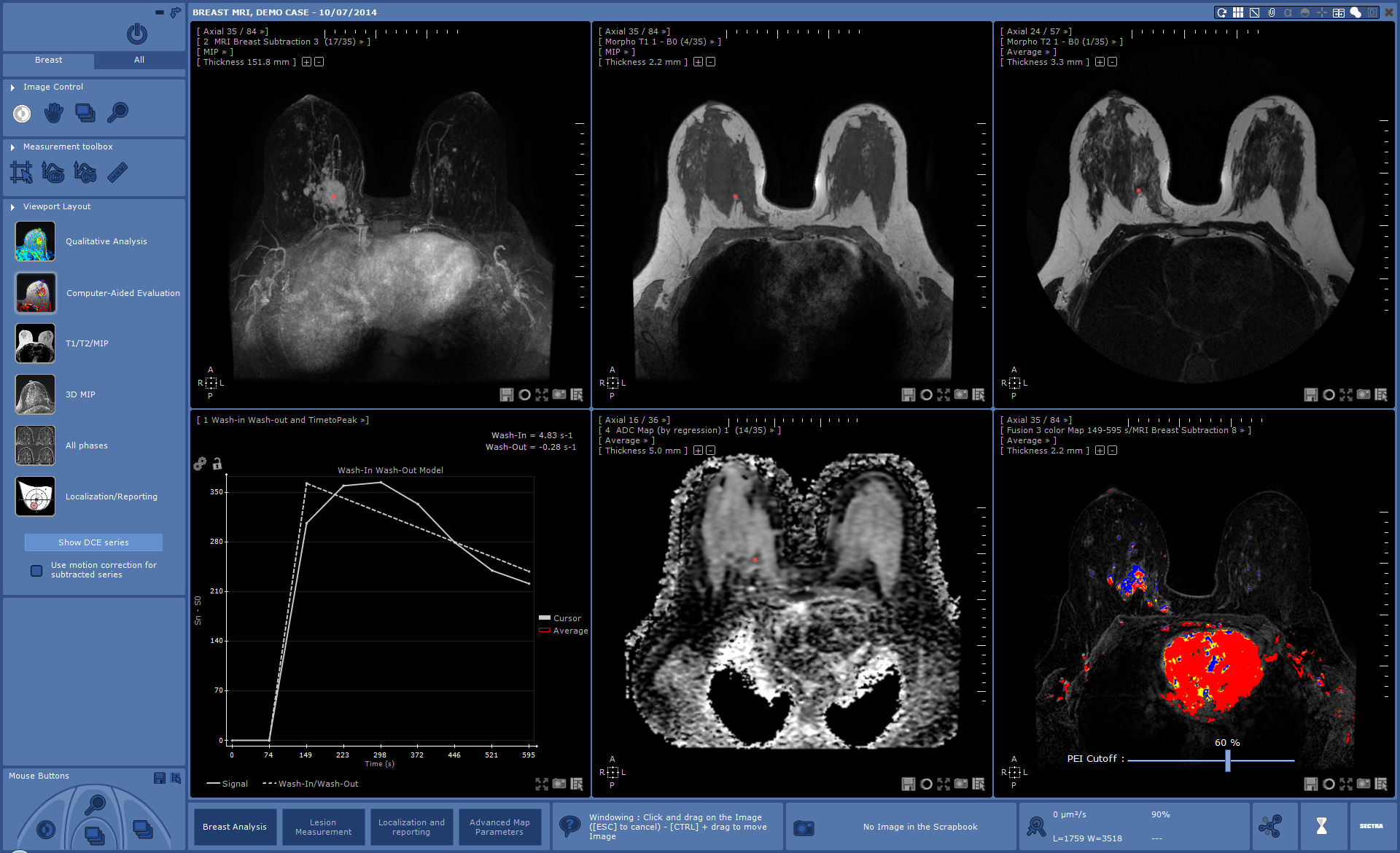Mammography screening programs have significantly reduced the mortality rate of breast cancer. However, screening programs still contain scope for improvement since all cancers are not detected. There are many research projects investigating new techniques to improve sensitivity and specificity.
In this article, Anders Granlund Product Manager for Sectra’s Breast Imaging IT suite, will highlight some of the most discussed trends such as quantification of breast density and automated breast ultrasound screening and its implications on the mammography workflow. He will also discuss how breast imaging IT solutions can help maintain a high throughput.
Emerging technologies
Sectra continuously follows the diagnostic trends in breast imaging and the trends that we are evaluating for possible PACS implications include clinical such procedures as spectral imaging, automated breast ultrasound screening and molecular imaging.
“All of the new technologies under development for improved breast cancer detection are exciting. However, they may pose a challenge to the efficiency of the breast imaging workflow and increase the demands on your RIS and PACS. Individual screening intervals based on breast density or other individual factors and reporting on images from several different modalities using new techniques are just two of the actions your IT solution will need to handle in the future,” says Anders Granlund.
One workspot, the most efficient workflow
A key in achieving an efficient breast imaging reading workflow is to give radiologists the opportunity to read in a focused and undisturbed environment. Radiologists should not have to move between different workstations to read images from different modalities. For example, if your mammography clinic is considering including breast tomosynthesis or breast ultrasound in the screening workflow, you need to have a PACS which supports a multi-modality workflow.
”I talked to one of our Breast Imaging PACS customers recently who had invested in a breast tomo modality. Before we launched our native support for enhanced breast tomosynthesis DICOM objects, there was a certain reluctance to use the new modality. It was simply too inefficient to move from the PACS workstation to the tomosynthesis modality workstation,” Anders Granlund explains.
Another important factor to consider if you are about to invest in a PACS, is that mammography radiologists often use specialized applications such as CAD. Looking further down the road, new applications will emerge to improve the reading workflow. Accordingly, it is key that the PACS can integrate with third-party applications. Having to launch another application just to do a CAD analysis is a real efficiency killer. Make sure that your PACS vendor understands integration and has a PACS strategy to integrate it all into a single workspot.
“Sectra already provides the most comprehensive breast imaging solution in the market, enabling our customers to have a streamlined high volume workflow in one single application, and will continue to do so. One example of Sectra’s commitment to provide the most efficient breast imaging solution in the market is our extensive integration program with third-party applications from more than 60 different vendors. This allows the radiologist to maintain a single workspace even when adopting new technologies and avoid having to move to modality-specific workstations for diagnosis,” says Anders Granlund.

